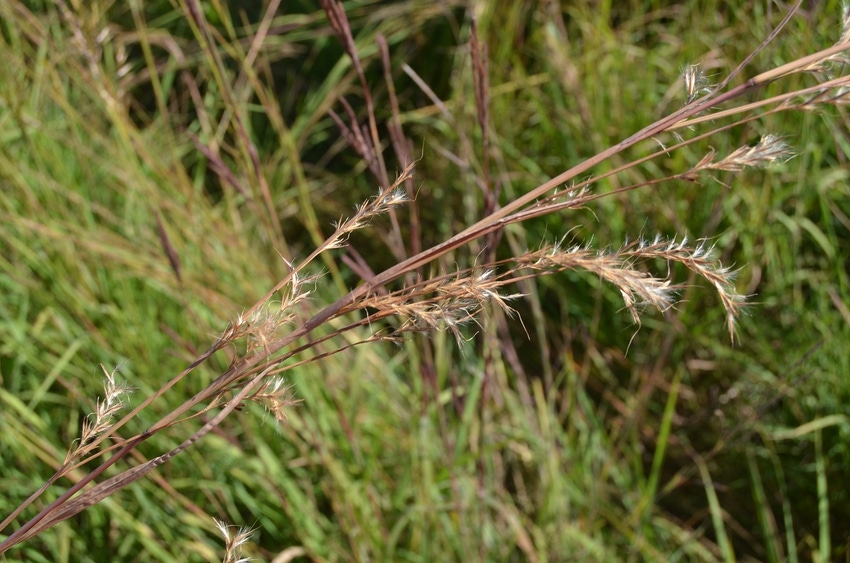
In mid-June 2018 I was in the truck with Dave and Chase Hayden out in southeast Montana. They run a 600-head cow-based grass operation and have been practicing controlled, managed grazing with frequent moves for more than a decade.
The rewards are powerful: In some rough-weather country, their winter hay feeding is near zero. The cattle find some green forage through the entirety of the long non-growing season.
Their country normally runs a cow-calf pair to 30 acres. They run a pair to 15-17 acres. Since Chase graduated high school (he is now 30), they have doubled their ranch capacity without purchasing or leasing more land. They have not bought a bunch of equipment or built a bunch of storage facilities. We saw cattle that were aggressively grazing but extremely docile and friendly. The profitability and lifestyle should be of envy to most of us.
Chase made the statement that he was real excited since they had decided to begin daily cattle moves several months back. Without thinking, I told him to stay excited and watch the progress closely. The figures and the outcome in two to five years are going to be so real and so good that he will continue to move forward after the initial excitement is gone. I plan to stay in touch to prove myself right while viewing pictures of their progress forward.
Boom and bust grazing management practiced in accordance with natural principles works and works visibly in 2 to 5 years in most all eco-systems. By the way, adaptive multi-paddock grazing system my friend Allen Williams teaches and talks about is very similar. Williams and I don’t disagree on anything that I consider important. We are speaking of management that yields a rich soil, plant, and animal complex capable of high function under most any conditions. Remember that markets and weather are forever changing.
I recently read a well-respected author who made the statement that only a few inches of the tips of the grasses were capable of fattening cattle. Well, there is some truth in the statement but the management model he is pushing mostly fails. These folks forget or neglect at least five major points:
Immature seeds are the most fattening part of most healthy plants.
Quality leaf tips are very short lived.
Cattle always require long stem dry matter for health.
Huge plant diversity yields much longer periods of moderate to high gains, no matter what the weather throws at us.
High plant diversity yields an increase in biomass tonnage production. This results in increased forage energy and weight gain per acre.
Much of animal health is about soil health, plant health, and plant diversity. Varying degrees of plant maturity as many days of the year as possible increases animal gains, health, and profits per acre. Profits per acre is the major income driver for ranches.
Ultimately, we are talking about how to move the water cycle, mineral cycle, soil biology, and energy cycle in the right direction. These are to a large extent dependent on managed high-density, severe grazing for short periods followed by complete plant recovery that yields large amounts of plant biomass and huge plant diversity with lots of grasses, legumes, forbs and often trees. The plants need to load the soil bank with seeds. The natural model hates bare ground,and a lack of seeds and soil life.
In 1883 future President Teddy Roosevelt while in his 20’s took a somewhat quick look at the cattle ranching business. Many other folks have also done this. Roosevelt invested almost 50% of his inheritance in almost 1,500 head of cattle, a large log cabin and a few acres in western North Dakota. He hired lots of help and at the end of four years his herd had been reduced 80% by death from the loss of grass and a horrible winter. Roosevelt mostly exited the business, and I understand he had very little business or money left. I have witnessed many similar instances in the last 40 years. Dead grassland can return. Dead cattle do not.
Back to seeds for a minute: When I am monitoring a cut of pasture in front of the cattle I like to see immature seeds from 10 or more species of plants. I also like seeing hard seeds from several high seral plants that we hope increase in number and density. We need to see this happening from early May until November in our area. This is an important part of what complete plant recovery is about. The system becomes rich with system stability. Complexity yields stability. Our business direly needs stability and dependability.
Even the weeds are there for good purpose. The plant community needs to be vibrant with a big mixture of ages. Seeds and a loaded seed bank are a requirement.
About the Author(s)
You May Also Like






